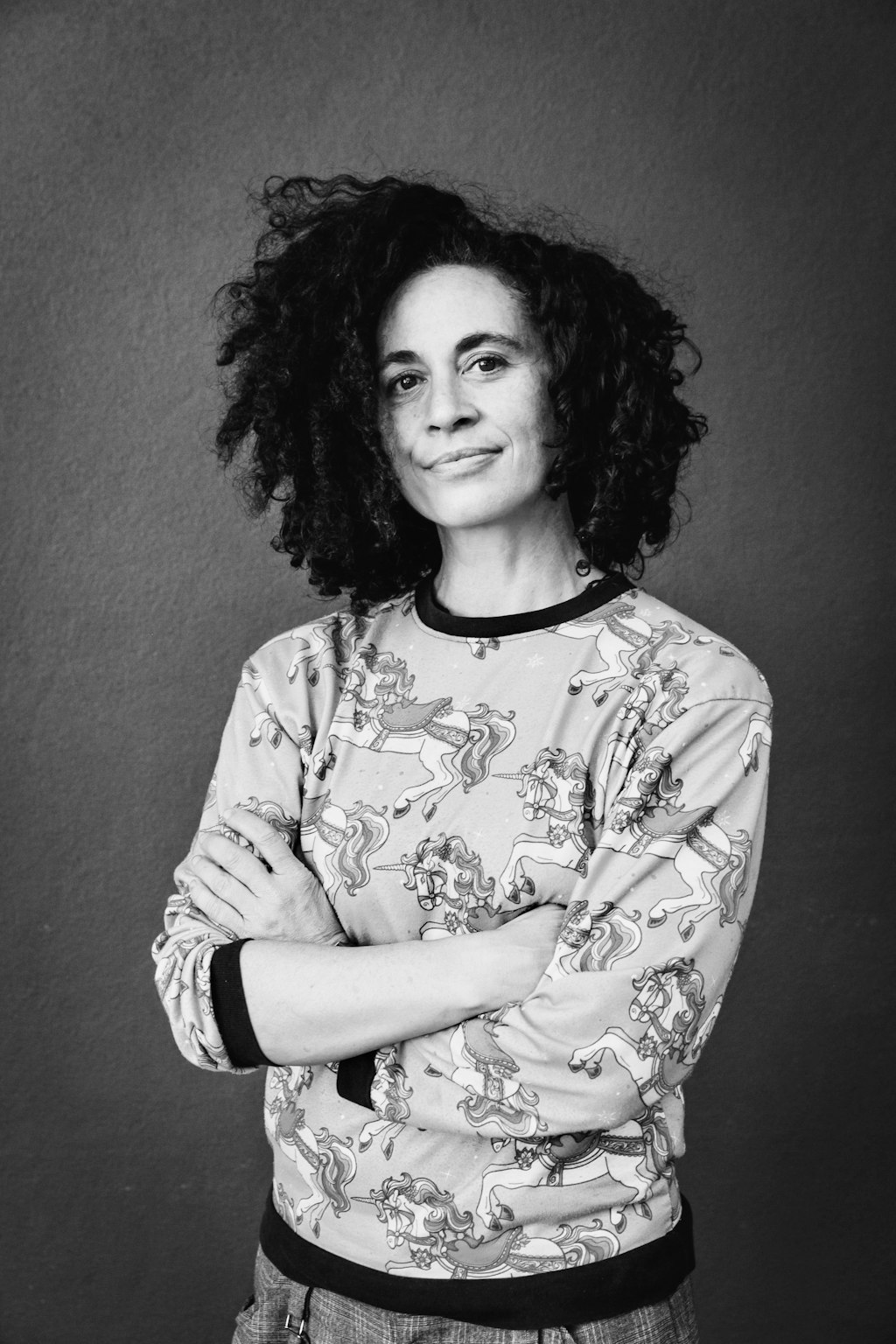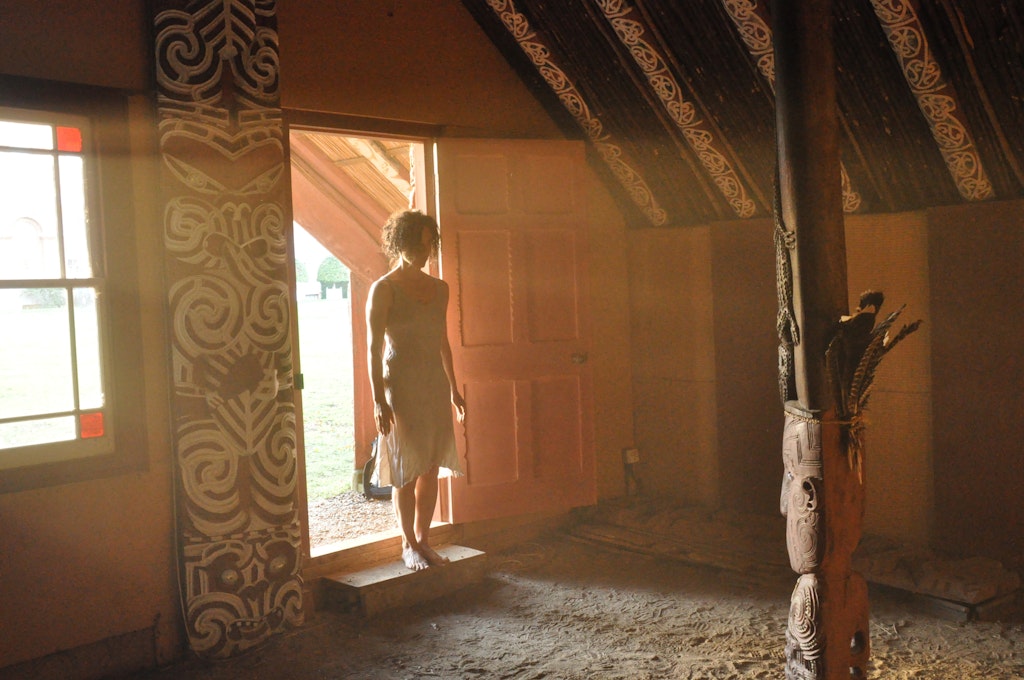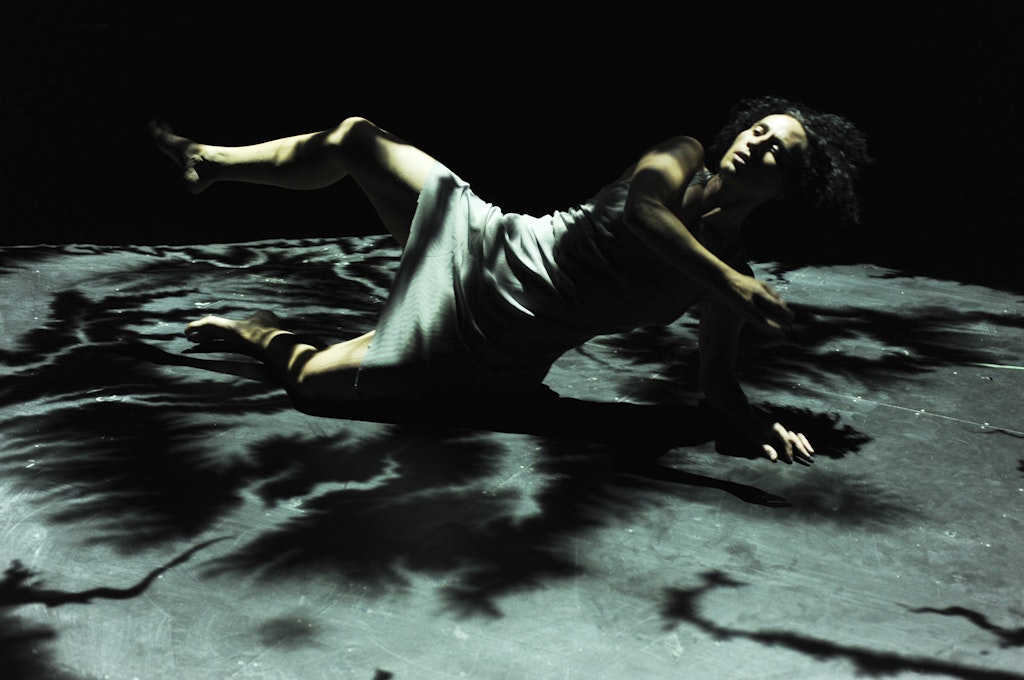Artist interview: Victoria Hunt

Victoria Hunt, photo: Kylie Haines
Victoria Hunt, photo: Kylie Haines
Māori–Australian dancer and choreographer Victoria Hunt spoke to Lisa Catt, curator of contemporary international art at the Art Gallery of New South Wales, about her new dance work KŌIWI, commissioned as part of the Art Gallery’s exhibition Dreamhome: Stories of Art and Shelter.
Through dance, sound, song, lighting and body adornment, this immersive new work continues the artist’s investigation into the story of her ancestral meeting house, Hinemihi.
It feels most appropriate to start our conversation with the story of your ancestral meeting house, Hinemihi, as she really holds the centre of your art practice. What can you tell us about Hinemihi and your relationship with her?
There are multiple ways to tell the story of Hinemihi. It is a story of origins, a story of traumatic events, and a story of colonial violence. It is also a story of resilience and generational care.
Hinemihi is a female ancestor, a meeting house, a marae. As the academic Paul Tapsell writes, ‘... a place where we, as Māori, are drawn in life and are laid out in death; where the core business is relationships; where the living ritually engages with the dead who in turn provide guidance to the living.’ The carvings of Hinemihi are imbued with complex Māori concepts of creation and cosmology.
After a cataclysmic eruption of Tarawera in 1886, where Hinemihi resided, she was assumed abandoned and sold to the Governor-General of New Zealand. Subsequently, Hinemihi was shipped to England in 1890 where she became a curio, a discotheque, a relic from a romanticised past – conjuring images of exotic events in far-off lands, an ‘artifact’ assimilated into British society. She still hasn’t returned home.
Hinemihi was constructed in a sublime cultural tradition, but she was sold. She was seemingly unmovable; and yet she moved. The marae was made under a lineage of traditions as a collective spirit of a people, but then became part of a property in a foreign land.
Kaumatua Māori Elder Wally Ruha once said to me: ‘... we haven’t lost the house at all, we’ve got it because it is in your dance. Imagine how many generations there were before the house was taken to England and how many have come since then.’ As a descendant, I inherit and activate a role to keep Hinemihi ‘warm’; my way to enact that role is through dance and performance-making. Hinemihi is fundamental to me as an artist as we – Hinemihi and I – are bound together through genealogy and ancestral narratives. I speak, and she speaks. I dance, and she dances me.

Victoria Hunt at Hinemihi, Clarendon Park, Surrey, UK, photo: James Brown
What did the invitation to make a new dance work for Dreamhome prompt in terms of thinking about this relationship in the present moment?
My performance work carries with it an aspiration to articulate how my relationship to Hinemihi oscillates in the physical form of a living body – an ancestral woman’s body, a queer body, a home, a dream, a descendant along ontological lines, and a direct descendant of the marae. The marae is a place of belonging, a ‘standing’ place of mana (authority, power, identity), expressing a deeply spiritual relationship in which one identifies as tangata whenua (people of the land). The deeper feelings that connect Māori with their marae remain intangible.
Hinemihi remains dislocated, dismembered and displaced. The rematriation of Hinemihi to her homelands has involved ongoing advocacy from community members and over two decades of my own dedication. Negotiations for her safe return to Aotearoa are underway between the Tūhourangi Tribal Authority, Te Arawa, Ngāti Hinemihi, the British National Trust, Ngāti Rānana, Heritage New Zealand Pouhere Taonga, Te Papa museum, New Zealand Māori Arts and Crafts Institute and community members.
As a performance artist, my body intervenes into frameworks of power in an attempt to make visible that which cannot be named and critique ongoing colonial narratives of custodianship versus ownership. The invitation to create a new work for Dreamhome, at the site of a newly built extension of the Art Gallery, represents fertile territory for these types of interventions, to insight critical discourse through embodied practice.
Much of your thinking for this new work, KŌIWI, started when walking along Maroubra Beach on Bidjigal Country in Sydney in 2021. Can you tell us about these walks?
After losing my aunty and uncle during lock-down, I found walking along the Bidjigal shoreline to be a place of refuge and release. Unable to travel back to Aotearoa to say goodbye and join in their tangihanga, the shoreline extending from the sandstone cliff’s edge into moana-nui-a-kiwa became a calling place. Calling back to Aotearoa and beyond, to the great ocean, to the skies, and to my ancestors.
A pufferfish jawbone and pumice stones found washed up on the shoreline acted as catalysts for KŌIWI. The jawbone is significant in Māori culture reflecting principles of tikanga (lore) and kawa (customs) to uphold that lore. The pumice stones prompted me to reflect upon movement across realms, from the subterranean to the terrestrial and further to the celestial.
When speaking to artist and Māori knowledge keeper Charles Koroneho about my experience of grief and the entities I had been assembling on the shoreline, he suggested KŌIWI as the title of the new work. KŌIWI is: tribe, ancestors, descendants, kaitiaki, guardians. Its primary translation, however, is bone. KŌIWI takes us to the very foundation of the physical body, to the whenua (land, placenta), and to the notion of home as something we carry within us. We are our inheritance. We are carriers of time, memory and vision.
What can audiences expect to see in this new work?
KŌIWI is a durational performance which orientates towards the cosmological. The work centres key Māori concepts of whakapapa (genealogy/kinship), hau kāinga (the home-calling breath) and kawa mate (memories carried as you make your way home). I will be performing with two other esteemed Indigenous artists: Moe Clark, Métis multidisciplinary artist, vocalist and drum carrier (Turtle Island); and Rosie Te Rauawhea Belvie, Māori vocalist, haka custodian and performer (Aotearoa). Both have extensive experience embodying cultural concepts through language, movement and voice, and bring with them instruments to activate the space with sound.
For more than a decade, I have been working in collaboration with Boris Bagattini, object and lighting designer, and James Brown, sound designer and composer. Drawing from previous works, where lighting and sound open liminal spaces of rupture and lamentation, an immersive environment will be made.
From a choreographic perspective, I dance the house, the house dances me. I reveal her story and she reveals mine. This iteration of the dance oscillates in the grayscale, the passageway between dark and light, an unveiling of sublime dreams. This in-between and expectant state is where Hinemihi currently resides. She is waiting for her homecoming and her people are waiting to receive her.
KŌIWI will be performed at the Art Gallery on 22, 23 and 26 July 2023. Find out more
A version of this article appeared in Look – the Gallery’s members magazine

Victoria Hunt in an earlier work, Copper Promises 2012, photo: Heidrun Lohr